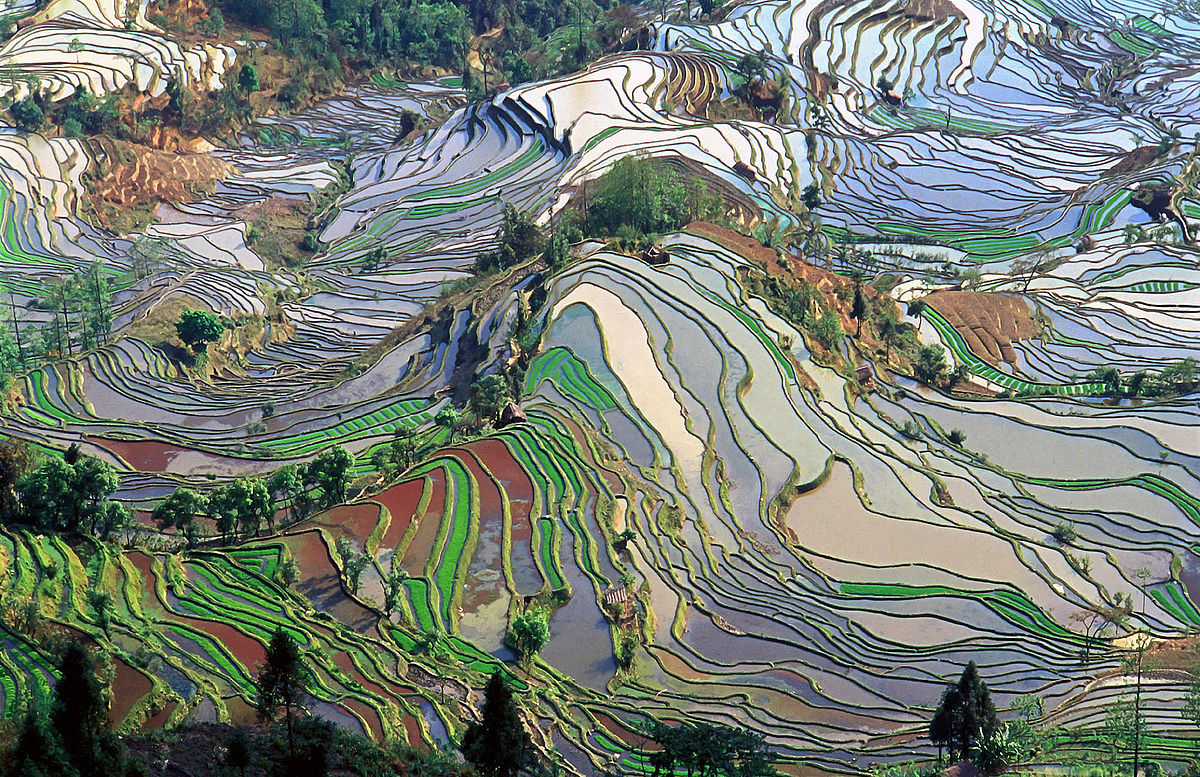Agriculture and food security
In 1987 the World Commission on Environment and Development (WCED) identified three specific types of agriculture worldwide:
- Industrial agriculture, is mostly present in the advanced economies. This is a type of agriculture run by agri-businesses (often MNCs) on a large scale and is an intensive form of agriculture dependent on a high level of inputs such as energy, chemical fertilizers, antibiotics and pesticides to maintain its productivity (UCS n/d). This type of agriculture is often at odds with nature conservation and is often present in the form of monoculture field systems with little genetic variety or any scope to accommodate nature. It is known to be a polluting form of agriculture, with neighbouring freshwater systems prone to eutrophication and neighbouring coastal marine ecosystems prone to hypoxia (Elliot 2013). This mass production form of agriculture is often dependent on external finance and is subsidised across Europe and North America to maintain food supply security.
- A modernising ‘green revolution’ agriculture, is typical of Asia. Through the use of technology and the use of hybrid strains of wheat and rice in particular, suited to local/regional conditions, the modernisation of Asian agriculture progressed throughout the 1980s to the present day. However, as environmental and social costs occurred in these new ‘high input’ modern systems, output began to diminish (Knight 2007). To boost production as population growth increased demand, a new biotechnology revolution was encouraged to bring Genetically Modified Organisms (GMOs) into the production system. The first ‘green’ revolution was publically funded and charity funded and centred around the cross-breeding of existing strains to produce hybrid plants. The new GMO revolution was driven by MNCs in the form of biotechnology companies from outside the region, driven by profit. Such externally centred and technology-led developments are often at odds with ideas around sustainable agriculture (Elliot 2013).
- The third type of agriculture is the traditional small-scale subsistence-based form of agriculture which is ‘resource poor’ and not well integrated into the global food economy, although integrated well into local communities (Oguamanam 2007). In these farming systems, inputs are low and yields are low. These agricultural systems are often found in remote rural areas, distant from main markets and their associated infrastructure. Such agriculture is often practiced on marginal soils and varying topography, yet is highly adapted to local conditions. The output is often very important to support rural livelihoods in the region.

'Terrace rice fields', by Jialiang Gao, from Wikimedia commons. Used under a creative commons license
As human populations globally continue to grow and the area of productive land diminishes year-on-year due primarily to unsustainable practices, the issue of food security becomes increasingly important and the parallel adoption of sustainable agriculture increasingly relevant.